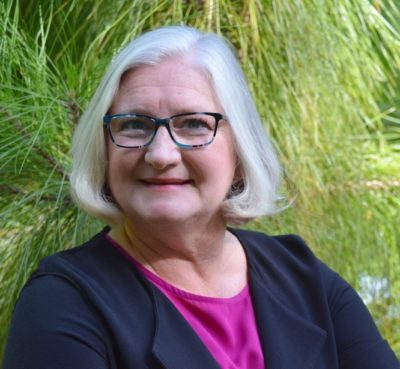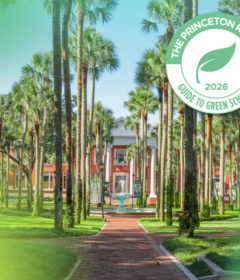Stetson to Receive $1.2 Million Florida Environmental Protection Grant


In late March, Stetson’s Institute for Water and Environmental Resilience gained proposal approval to ultimately receive a $1,243,397 grant from the Florida Department of Environmental Protection for a project called “BioMaze Advanced Septic Treatment Systems: Evaluating Nitrogen Reduction Efficacy and Organic Matter Conversion to Mitigate Harmful Algal Blooms (HABs).” (The formal grant agreement has not been executed.)
In all, the Florida DEP awarded $10 million in grants for 15 projects focused on mitigating the effects of harmful algal blooms, including blue-green algae. The projects will deploy and evaluate cutting-edge technologies to prevent bloom occurrences and implement treatment strategies to minimize environmental and economic impacts.
Testing ‘BioMaze’
Stetson’s IWER project will test variations of the product “BioMaze,” developed by the company RioVation, in 50 participating homes with septic tanks — likely near the Sandra Stetson Aquatic Center on Lake Beresford.

Nitrogen from septic tanks is a significant contributor to harmful algal blooms in both inland surface waters such as Lake Beresford and the St. Johns River, as well as coastal waters like the Indian River Lagoon and other coastal areas where rivers discharge to the ocean. Harmful Algal Blooms impose a significant economic harm statewide through impacts on tourism, commercial and sport fishing, and human health.
“This is a big deal because, if the systems perform as designed, the BioMaze product that installs into existing tanks offers a cost-effective alternative to septic tank upgrades or connections to municipal sewer, which are required by 2030 [per a 2023 state law],” described Wendy Anderson, PhD, professor of Environmental Science and Studies, who submitted the grant proposal last July.
Evaluating Environmental Claims
Early this summer, recruitment will begin for participating homes, with the project providing septic tank pump-outs and inspections. A treatment category then will be assigned (control or one of four variations of BioMaze) to groups of 10 homes for each variation. Ultimately, the project will evaluate RioVation’s claims that its technology can reduce nitrogen and total suspended solids by up to 90% in the effluent from the tanks that goes into the leach field.

Since launching the Innovative Technology for Harmful Algal Blooms Grant Program in 2019, Florida has invested in more than 65 innovative technologies to combat harmful algal blooms. The program also has enabled DEP to secure multiple contracts for responsive bloom management.
Jason Evans, PhD, IWER’s executive director and professor of Environmental Science and Studies, is pleased that IWER is continuing to be part of emerging environmental solutions.
“We’ve known for decades that conventional septic tanks are one of the leading sources of nitrogen pollution to Florida’s waters, including our local springs and the Indian River Lagoon here in Volusia County,” Evans said. “I’m incredibly proud of Professor Anderson’s leadership in developing this partnership with RioVation to objectively evaluate a highly promising technology for addressing that pollution in a sustainable way.”



